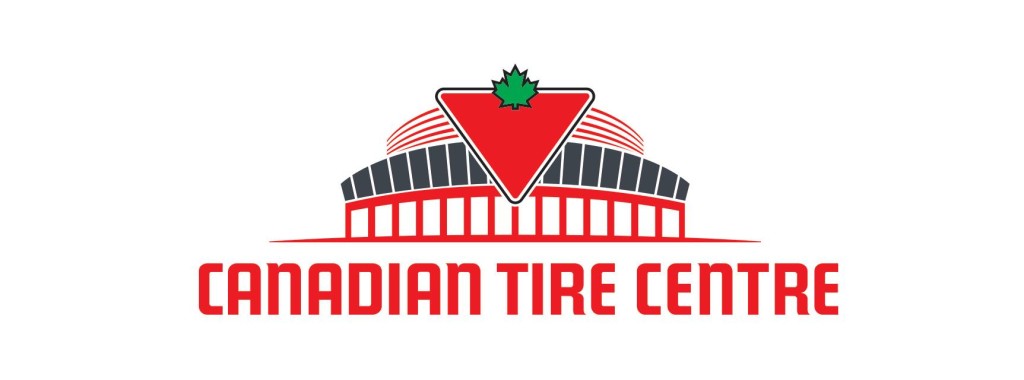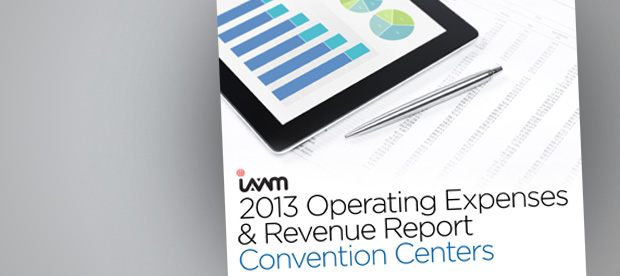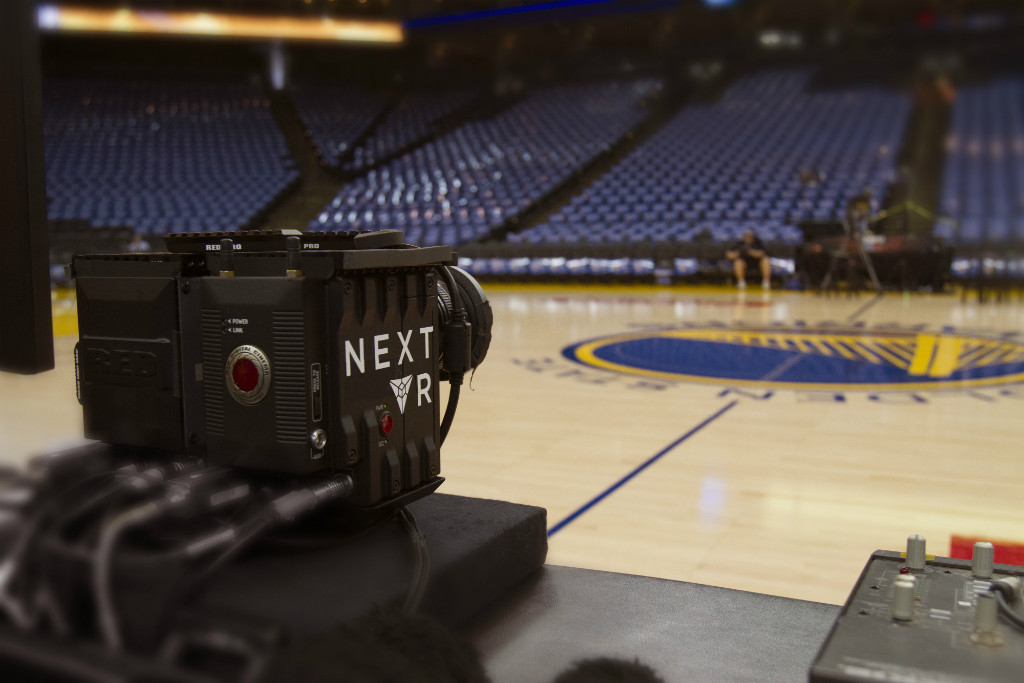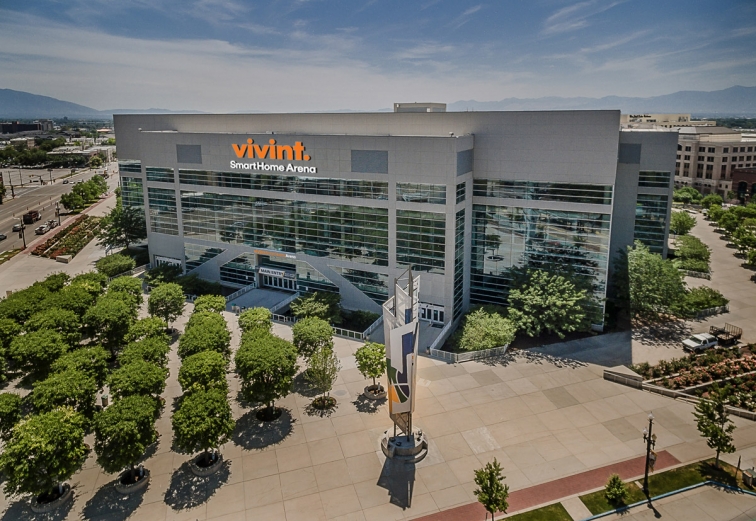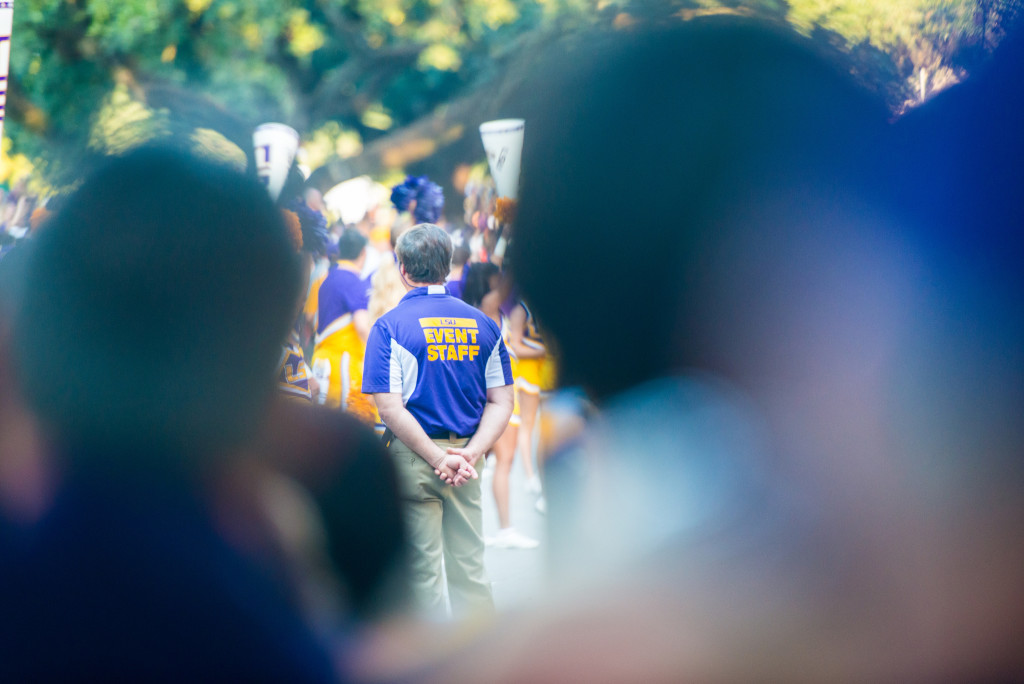Canadian Tire Centre and IBM Partner for Fan Analytics
The Canadian Tire Centre and the Ottawa Senators are partnering with IBM to learn more about fan behavior in order to personalize communication, enhance the arena experience, and increase ticket sales.
“We have an incredibly dedicated fan base that supports our team and players at every turn. We want to make sure we don’t just thank them for their support, but ensure their experience is second to none,” said Peter O’Leary, chief marketing officer and vice-president of ticketing with the Ottawa Senators, in a statement. “Working with IBM, we’ll not only have the chance to collaborate with a tremendous local partner, but we’ll be able to gather new insights on our fans that will allow us to be more efficient in our operations and provide a more personal and enhanced experience for all of our guests.”
According to an IBM press release, their will be five primary goals of the partnership.
Fan Insights and Clustering: To help identify and make sense of fan attitudes, behavior trends, and psychographic characteristics to identify individual fan preferences and offer more personalized interactions.
Fan Experience Effectiveness: To provide visual analysis of fan interactions and uncover opportunities for greater brand and fan interactions.
Lead Scoring: To help drive more effective target offers for renewals, up-sells, and incentives for new customers to maximize revenue.
KPI Dashboard: To help track the success and ROI on key initiatives and campaigns, review and audit all fan metrics, and enable business user discovery and analysis.
Data Warehouse Strategies: To aggregate all data source opportunities including governance, data capture opportunities, and existing sources into a cloud-based warehouse.
IBM Fan Insight for the arena and team will begin in November and be used throughout the season.
“Fans attending games at arenas like Canadian Tire Centre are no longer a ‘captive audience’ to organizations thanks to the advent of smartphones and other technologies. Teams need to take additional steps in order to engage their fans on a higher level,” said Alistair Rennie, general manager of analytics solutions at IBM, in a statement. “With access to more data about fans than ever before, the Ottawa Senators understand that this data can be an incredible resource for engaging their fans where, when, and how they want to be reached while increasing their own operational efficiency.”
(Image: Facebook)
Audit Inaccurately References VenueDataSource Report
An audit of the Walter E. Washington Convention Center (WWCC) recently referenced data from the 2013 Convention Center Operating Expenses and Revenues Report published by VenueDataSource, the research department of the International Association of Venue Managers (IAVM).
IAVM has closely evaluated the data cited, and has found it to be inaccurate and inconsistent with the actual material available in the original VenueDataSource report.
The findings in the final audit consistently reference average metrics for “large convention centers,” but this data was not presented in the report provided by VenueDataSource, and has led to a significant misuse of the actual report data. The VenueDataSource report included average revenue of $36.04 per TRSF, and average expenses of $37.15 per TRSF*—metrics generated from all surveyed convention centers. The variance in these participating venues is significant, with venue size (square footage), market, management structure, and numerous other criteria demanding careful consideration when applying metrics or attempting to draw conclusions.
Furthermore, any data in the audit referring specifically to Events DC or the WWCC was not sourced in any VenueDataSource report, as IAVM handles all survey data with complete confidentiality.
Frank Ingoglia, Research Manager with VenueDataSource, shared that the reported outcomes may require significant correction, and that had he been asked to review the material prior to publication, inconsistencies and misreported results could have been identified and avoided.
“VenueDataSource is managed very carefully to ensure that the metrics collected are meaningful, reliable, and contextually relevant. We pride ourselves on the integrity of our data, and it is counter-productive and misleading to see our report misused in this instance.”
IAVM has contacted the audit team and various reporters covering the story. An initial report published in the Washington Business Journal referenced the incorrect metrics, but a subsequent article posted after IAVM contacted the editor highlights the misused figures:
“The difference between the profitability of the Walter E. Washington Convention Center and other large convention facilities in the U.S. may not be as stark as a D.C. Auditor’s report released earlier this week indicated. Convention center manager Events DC and the International Association of Venue Managers, whose report was cited in the D.C. audit, say the numbers compared in the report are incorrect.”
The Washington Post also included a mention of misused data from the IAVM report, and the audit team has notified IAVM that they are currently reviewing the issue internally.
“Our team works hard to make VenueDataSource a reliable tool for our members,” said Vicki Hawarden, CMP, IAVM president and CEO. “The integrity of the data shared remains a top priority, and we are glad to see the auditor and media acknowledge the importance of integrity in how the data is used as well.”
More information about VenueDataSource, or the report referenced in this story, can be obtained by contacting the research department at IAVM.
*TRSF = total rentable square foot
// UPDATE 11/2/15 //
The Office of the D.C Auditor, upon receiving IAVM’s clarification of metrics associated with the VenueDataSource report, has reviewed our concerns and notified us that they will:
1. Revise the audit report to correct comparison data.
2. Offer WWC/Events DC an opportunity to provide revised comments
3. Reissue the report, including an errata paragraph that references the initial release and the error in language around the comparison universe and including revised WWC/Events DC comments if provided.
4. Provide reissued copies to the D.C. Council under a cover letter to Chairman Phil Mendelson (the ODCA oversight chairman) and Finance and Revenue Committee Chairman Jack Evans explaining that this is a reissuance due to error in the initial report.
5. Notify reporters at The Washington Business Journal and The Washington Post about the reissuance and the error in the comparison universe.
NBA’s Warriors Offer Opening Season Game via Virtual Reality
Do you want courtside seats to the Golden State Warriors vs. New Orleans Pelicans game? If you have a Samsung Gear VR headset, that’s where you’ll sit.
Tonight, October 27, the NBA and Turner Sports—working with NextVR—will offer access to the first live-streaming, regular season, U.S. professional sports game in virtual reality (VR). In addition, viewers can watch the Warriors’ championship ring presentation at Oracle Arena.
The Warriors aren’t the only team experimenting with VR. So are the Sacramento Kings, who conducted tests of two VR games in the pre-season. The Kings will offer VR streaming of their Wednesday night game, but it will only be available inside the arena.
“The Kings, who are producing their live VR stream Wednesday without direct coordination with the NBA, have been working with the VR technology company Voke,” Daniel Terdiman reported for Fast Company. The team hopes to differentiate its VR offering from that of the NBA’s presentation of the Warriors-Pelicans game by making it platform agnostic, meaning its should be available on any VR platform—such as Oculus Rift, Google Cardboard, or even YouTube 360 or Facebook 360 Video, as well as Gear VR.”
As a venue manager, how do you feel about VR? Is this a new way to grow fan engagement, or will it keep fans away from venues? Please share your thoughts with us in the comments section.
(Image: The Golden State Warriors/NBA)
Home of the Utah Jazz Has a New Name
The NBA’s Utah Jazz will now play home games in Vivint Smart Home Arena. Previously known as EnergySolutions Arena, the naming rights for the 19,911-seat venue will be for 10 years.
“The Utah Jazz and the arena have been an incredible economic engine for this region, and have created a tremendous sense of pride among Utahns,” said Todd Pedersen, CEO of Vivint, in a statement. “This agreement extends far beyond a typical ‘logo-on-the-building’ arrangement—it’s a true partnership built around innovation, community impact, and the drive to elevate the prominence of Utah.”
Arena owner and operator Larry H. Miller Sports & Entertainment and Vivent’s partnership includes an interactive “Vivint Smart Home Experience” on the arena concourse, expertise in products and services to improve the game night fan experience, and upgraded security and automation technology at the basketball facilities.
“I am really pleased about this association between two Utah businesses,” said Gail Miller, owner of the Larry H. Miller Group of Companies, in a statement. “Vivint shares our vision of having the arena be a gathering place for our community where millions of visitors can enjoy the Jazz and other first-class entertainment. I also want to thank EnergySolutions for their past contributions and continued support of our company and the Jazz.”
Check out the video below introducing the new name.
Staggered Staffing and Staggering Costs
It was a beautiful evening before the game. The venue was prepped and clean. The team was getting ready in the locker room. The game was only two hours away. Popcorn was popping, and retail merchandise was being straightened up. Young fans were excited for their first professional sports game ever! Then, with hundreds of staff ready and waiting, the doors were finally unlocked AND…half a dozen fans trickled in slowly. Not the most climactic opening, but the children who are enjoying their first game ever with dad don’t care. On the other hand, the venue manager with a labor budget is a little more concerned.
It happens, and the fact is, sometimes attendance is lackluster or people decide that showing up a few minutes late isn’t a big deal. In my experience described above, the team’s record was decent and the opponent was average. It was a Monday night, and the weather was perfect. Due to these—and many other reasons—attendance was projected to be low. Just after doors opened and guests trickled in one or two at a time, one of the facility directors and I walked around. We noticed every entrance was fully staffed with 20 or more employees and eight metal detectors. With several entrances being utilized, we were looking at almost 100 staff and most of them with nothing to do. To top it off, peak ingress for guests wasn’t expected until the game started. How many games or events could this happen to? How many thousands of dollars are wasted every year? How many avoidable OT hours are paid and additional ACA healthcare payments made? We cannot avoid all of it, but with a little time and effort spent on staffing, we could save thousands of dollars easily.
Staffing Levels
The idea of multiple staffing levels based on factors like attendance is not new, but sometimes it is good to revisit the subject and give the facility a quick analysis. Even walking around before certain events and recording what you see can be helpful. Attendance and staffing needs can be driven by many things including, but not limited to: day of the week, weather, a team’s record, the opponent’s record, new players, promotions and giveaways, state/federal holidays, celebrity appearances, etc. The Phoenix Suns’ Analytics Team has worked on several employee staffing metrics using this kind of data to better project attendance. Knowing attendance is only one aspect. Another question is: when should staff arrive, how many, and who? Staggered shifts can be the easiest fix. Bring in the minimum number needed early and more staff later. This also allows for earlier staff to leave prior to accumulating overtime in case the event goes long. There is not a one size fits all solution for all venues, even for the sport or the region. The Oakland A’s have utilized staggered staffing for years. By utilizing four different staffing levels, including variations for weekday vs. weekend games, they were able to save approximately 9 percent in annual labor costs.
Positioning and Redeployments
Another popular staffing method is to redeploy staff that are primarily used before the event to other positions during the event. For example, ticket takers could be redeployed as ushers after the event has started. Security officers, who are checking bags or wanding at ingress, could be moved to a roving position at the end of ingress. Additionally, positions might be redeployed toward the end of the event to prepare for egress. Sometimes, you may also assign an employee to the same position consistently, but you should always consider the event. For example, Adam may be a great security officer, but during an intense concert you may want to staff a more physically imposing employee…preferably a veteran with some Jiu-Jitsu experience. One of the most unique positioning methodologies I have seen is at AT&T Stadium. After event staff check-in, a receipt is printed with a section, row, and seat number that the employee reports to. The supervisors received a pre-printed report of the names of their staff and seat numbers assigned to them. If someone is missing, they know exactly who it is and can call a fill-in from what they call “Special Teams.” At this point the change is noted, and the staff members are off to their briefings and positions. This is a fantastic system, for this venue, while others may need to function differently. I have to give special credit to Paul Turner, CFE, CSSP, for this process.
Story from the Field
One of our clients shared a story they had regarding lower staffing levels. A section only sold 10 tickets, so they had that usher support a wider area instead of bringing in one per section. This would normally not be a problem, but it just so happens one of those 10 tickets was for a brutally rude heckler. Normally, an usher for that section could address the issue immediately, but more time was taken and the guest experience suffered.
Making sure you have enough staff to provide the guest with the best experience is an art and a science. In the ever changing world of sports and entertainment, this is something that is always on our mind and striking that balance can be challenging. However, it doesn’t mean we can’t be smart about managing all those hours and labor, too.
(Image: Billy Metcalf Photography/Creative Commons)
Do you want to receive a Front Row News weekly digest?
Categories
- Allied (861)
- Architecture (147)
- Arenas (747)
- Career (897)
- Convention Centers (895)
- Education (623)
- Events (1,544)
- Food & Beverage (193)
- Foundation (113)
- Guest Experience (1,496)
- Industry News (2,270)
- Leadership (1,888)
- Marketing (150)
- Membership (2,000)
- Music (213)
- Performing Arts Centers (454)
- Professional Development (409)
- Research (127)
- Safety & Security (442)
- Sports (763)
- Stadiums (608)
- Student (159)
- Technology (516)
- Ticketing (92)
- Touring (82)
- Trends (364)
- Uncategorized (743)
- Universities (218)
- Video (25)
- Young Professional (198)
Twitter Feed
- Twitter feed loading
Recent Posts
- Venuworks and ATG Entertainment Selected to Manage Fresno Convention and Entertainment Center
- Seattle Convention Center Announces Strategic Leadership Appointment and Growth Initiatives for 2026
- Peggy Daidakis Humbly Made Convention Center History
- Welcome to Our Newest Members
- New Member Benefit! IAVM Partners with Advantage Training to Elevate Staff Readiness and Guest Experience
Categories
- Allied
- Architecture
- Arenas
- Career
- Convention Centers
- Education
- Events
- Food & Beverage
- Foundation
- Guest Experience
- Industry News
- Leadership
- Marketing
- Membership
- Music
- Performing Arts Centers
- Professional Development
- Research
- Safety & Security
- Sports
- Stadiums
- Student
- Technology
- Ticketing
- Touring
- Trends
- Uncategorized
- Universities
- Video
- Young Professional
Archives
- December 2025
- November 2025
- October 2025
- September 2025
- August 2025
- July 2025
- June 2025
- May 2025
- April 2025
- March 2025
- February 2025
- January 2025
- December 2024
- November 2024
- October 2024
- September 2024
- August 2024
- July 2024
- June 2024
- May 2024
- April 2024
- March 2024
- February 2024
- January 2024
- December 2023
- November 2023
- October 2023
- September 2023
- August 2023
- July 2023
- June 2023
- May 2023
- April 2023
- March 2023
- February 2023
- January 2023
- December 2022
- November 2022
- October 2022
- September 2022
- August 2022
- July 2022
- June 2022
- May 2022
- April 2022
- March 2022
- February 2022
- January 2022
- December 2021
- November 2021
- October 2021
- September 2021
- August 2021
- July 2021
- June 2021
- May 2021
- April 2021
- March 2021
- February 2021
- January 2021
- December 2020
- November 2020
- October 2020
- September 2020
- August 2020
- July 2020
- June 2020
- May 2020
- April 2020
- March 2020
- February 2020
- January 2020
- December 2019
- November 2019
- October 2019
- September 2019
- August 2019
- July 2019
- June 2019
- May 2019
- April 2019
- March 2019
- February 2019
- January 2019
- December 2018
- November 2018
- October 2018
- September 2018
- August 2018
- July 2018
- June 2018
- May 2018
- April 2018
- March 2018
- February 2018
- January 2018
- December 2017
- November 2017
- October 2017
- September 2017
- August 2017
- July 2017
- June 2017
- May 2017
- April 2017
- March 2017
- February 2017
- January 2017
- December 2016
- November 2016
- October 2016
- September 2016
- August 2016
- July 2016
- June 2016
- May 2016
- April 2016
- March 2016
- February 2016
- January 2016
- December 2015
- November 2015
- October 2015
- September 2015
- August 2015
- July 2015
- June 2015
- May 2015
- April 2015
- March 2015
- February 2015
- January 2015
- December 2014
- November 2014
- October 2014
- September 2014
- August 2014
- July 2014
- June 2014
- May 2014
- April 2014
- March 2014
- February 2014
- January 2014
- December 2013
- November 2013
- October 2013
- September 2013
- August 2013
- July 2013
- June 2013
- May 2013
- April 2013
- March 2013
- February 2013
- January 2013
- May 2012
- March 2012
- December 2011
- November 2011
- October 2011
Recent Comments
- Frank Bradshaw, Ph.D., CVE on John Meyer, CVE, a Tireless Advocate of Certification for Venue Professionals, Has Died
- Neil Sulkes on Hilary Hartung, Friend to Many in Venue Marketing, Has Left Us
- Jason Parker, CVE on The Devastation of Hurricane Helene and How We Can Support One Another
- Larry Perkins on Touhey Testifies Against Speculative Ticketing Before Congressional Subcommittee
- Peter Secord on Major Players for Planned Elkhart Amphitheater Were in the Mix at VenueConnect

